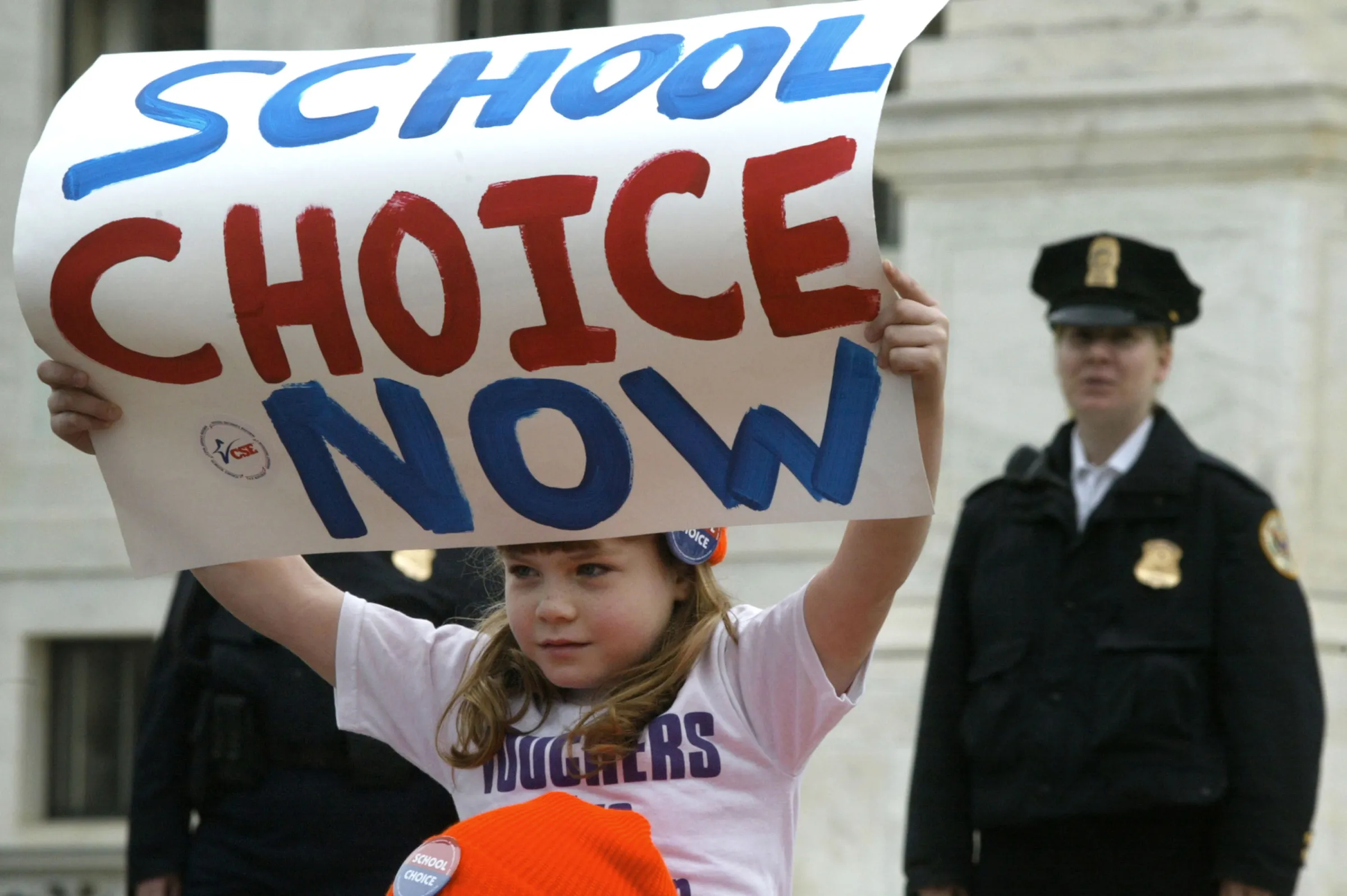“New study finds that the surge in voucher programs is driving a significant transformation in private school education across the nation.”
In recent years, the debate over educational vouchers has taken center stage in discussions about the future of private school education. Once seen as a niche policy tool, the voucher push is now gaining unprecedented momentum, promising to open doors for millions of students and reshape the education landscape. But what is really driving this shift, and how is it impacting private schools across the country?A new groundbreaking study sheds light on the profound role voucher programs are playing in transforming private school education today. From improving access for underserved families to sparking changes in school competition and teaching methods, the research uncovers both the opportunities and challenges this controversial policy presents. In this article, we’ll dive deep into the study’s key findings and explore how the voucher push is not just changing who attends private schools—but also how these institutions operate in the modern era.

What Is the Voucher Push?
At its heart, the voucher push is about giving families more control over their child’s education. But what exactly are educational vouchers, and how does this whole system work?
An educational voucher is like a ticket funded by the government that allows a family to use public money toward private school tuition. Instead of a child being limited to the public school assigned by their neighbourhood, a voucher gives parents the option to choose a private school that they believe offers a better fit for their child’s needs—whether for smaller class sizes, specialized programs, or a different learning environment.
How Does the Voucher System Work?
Here’s the simple version:
- A family applies for a voucher, often based on financial need or other eligibility criteria set by the government.
- Once approved, the government provides a specific amount of money—usually equivalent to what it would have spent on that student in a public school.
- The family can then use this voucher to cover part or all of their child’s tuition at an eligible private school.
- The private school accepts the voucher as payment, giving the family access to education that might have been out of reach before.
This system shifts the funding focus from public schools to individual students, allowing money to “follow the student” wherever they go.
Who Are the Key Players?
- The Government: At local or state levels, governments set the rules, determine eligibility, and provide the funding for the vouchers. Their role is to manage the program and ensure accountability.
- Private Schools: These schools become part of the system by accepting vouchers. They offer an alternative to public schooling and must meet certain requirements to qualify for the program.
- Families: Parents and guardians are at the center of the voucher push. It’s their choice—guided by the desire to find the best educational environment for their children. For many, this is about hope and opportunity, especially for those who feel trapped by the limits of the public school system.Ultimately, the voucher push isn’t just a policy debate—it’s about real families striving to give their children a brighter future. The way these vouchers are changing private school education reveals a powerful shift in how we think about education, opportunity, and choice in today’s society.
New Study Reveals the Impact of Voucher Push
For many parents, finding the right school for their child feels like an uphill battle. Public schools can be overcrowded, underfunded, or just not the right fit, and private schools often seem like a dream that’s too expensive to reach. That’s where the voucher push comes in—a government program that helps families by providing financial support to send their children to private schools.
But beyond the policy debates and political arguments, what does this really mean for everyday families?
A Ray of Hope for Families
Take Maria, for example—a single mother working two jobs just to make ends meet. For years, she worried about sending her son to an overcrowded public school where he wasn’t getting the attention he needed. Then, through a voucher program, she was able to enroll him in a nearby private school with smaller classes and caring teachers. “It changed everything,” she says. “For the first time, I felt like I was giving my child a real chance.”
The recent study reveals stories like Maria’s aren’t rare. It shows that more and more families are finally getting access to private school education, thanks to vouchers. Parents who once felt hopeless are now seeing doors open.
Private Schools Learning to Adapt
But it’s not just about the families. Private schools are also learning to adapt. With more students coming in through voucher programs, many schools are getting creative—offering new programs, adjusting how they approach teaching, or simply becoming more flexible with admissions. The study highlights how some schools are embracing the challenge, striving to provide exactly what families are seeking: quality education, individual attention, and a supportive environment.

The Struggles Still There
That said, the study doesn’t sugarcoat the difficulties. Not every family finds the right fit, and not every private school is prepared to meet the needs of voucher students. Some parents shared heartbreaking experiences of trying to use a voucher, only to discover there were very few schools nearby accepting them, or that the available schools didn’t have the right programs for their child. One father shared, “I thought the voucher was going to be the answer, but it ended up feeling like just another obstacle.”
It’s About Real People, Real Dreams
What makes this study stand out is how it brings forward real stories—not just numbers. Behind every statistic is a parent trying to do their best, a child dreaming of a brighter future, and a teacher working hard to meet new challenges. The voucher push isn’t just a policy shift—it’s a lifeline, a struggle, and a hope for change all at once.
At the end of the day, this research reminds us that education is deeply personal. It’s about families fighting to give their children a better chance, and schools adapting to meet new expectations. The voucher push is quietly changing the landscape, one family at a time.
Why Is Voucher Push Controversial?
At first glance, the idea of giving families more choices for their children’s education sounds like a win-win. Who wouldn’t want the freedom to pick a school that fits their child’s needs, especially when the government helps cover the cost? But in reality, the voucher push is stirring up plenty of debate—and it’s easy to see why.
For Some, It’s a Lifeline
For parents like Maria, who struggled to find a good school for her son, vouchers are a blessing. They offer a chance to escape overcrowded classrooms and outdated public school programs. Parents say vouchers give them power and hope—a way to finally help their child thrive.
But Critics See Big Problems
On the flip side, many educators, policy experts, and public school advocates worry the voucher push is doing more harm than good. Their biggest concern? It takes much-needed funding away from public schools.
Imagine a public school in a struggling neighborhood, already stretched thin. Every time a student leaves to use a voucher, that school loses part of its budget, making it harder to serve the students who remain. Critics argue that instead of improving public education, vouchers could weaken it even further, leaving the system worse off.
The Uneven Playing Field
Another big concern is fairness. Not all private schools accept vouchers, and not all offer the same quality of education. In some areas, families are left with just a few options—some of which may not be any better than the public schools they were trying to leave. As one father shared in the study, “I wanted to use the voucher to get my daughter into a better school, but in the end, there weren’t many choices nearby, and the ones that did accept it weren’t equipped to help her.”
The Heart of the Debate
At its core, the controversy isn’t just about numbers or budgets—it’s about people. It’s about parents trying to do right by their kids, schools trying to survive in a shifting system, and policymakers trying to balance ideals of choice and equality. The voucher push raises important questions:
- Should public tax dollars help pay for private education.
- Does increasing choice help every family, or only those already better off?
- What happens to public schools in the long run?
The study doesn’t claim to have all the answers, but it makes one thing clear—this isn’t just a policy debate on paper. It is a deeply personal issue touching the lives of millions of families across the country.
How Private Schools Are Adapting
As more families turn to vouchers to send their children to private schools, these schools are facing a whole new world of opportunities—and challenges. It’s not just about accepting more students; it’s about rethinking how they teach, operate, and connect with families in this changing landscape.
Becoming More Family-Focused
Private schools have always offered an alternative to public education, but the rise of voucher programs is pushing many of them to become even more focused on meeting the individual needs of students and families. Suddenly, it’s not just about prestige or tradition—it’s about delivering real, measurable value.
Take Greenfield Academy, a small private school in a suburban town. Before the voucher program, they had a stable but modest student body. Now, they’ve started offering personalized learning plans, after-school tutoring programs, and flexible payment options to attract and support families using vouchers. The school’s principal explains, “We realized that to truly help these families, we had to listen, adapt, and be more creative in how we offer education.”
Expanding Access Without Sacrificing Quality
Many private schools have embraced the chance to serve a more diverse group of students. For schools that once catered mostly to affluent families, vouchers represent a way to reach students from different backgrounds and provide a more inclusive environment.
However, the study shows that this shift isn’t always easy. Some private schools worry about covering costs, as voucher amounts don’t always fully match tuition fees. Others have to invest in new programs to help students who may need extra academic support or social services—something they weren’t necessarily prepared for before.
Innovating Under Pressure
The voucher push has also sparked innovation. Schools are experimenting with new teaching methods, adding technology-driven learning, creating specialized programs in STEM, arts, or language development, and even offering transportation services to make it easier for families to access them.
One private school teacher shared, “It used to be about maintaining tradition, but now we’re thinking differently—how do we provide the right support for every child, regardless of background?” For many schools, it’s a balancing act between staying financially sustainable and truly meeting the unique needs of a changing student population.
The Bigger Picture
Ultimately, the voucher push is reshaping private schools in profound ways. It’s encouraging them to become more flexible, more creative, and more mission-driven—not just places of privilege, but real options for families seeking a better future.
The result? A quiet revolution happening inside classrooms, admissions offices, and school leadership meetings—a shift driven by the simple but powerful desire to help students succeed.
“As the voucher push changes the way private schools operate today, it’s worth reflecting on how school systems once focused heavily on physical fitness standards, like the Presidential Fitness Test. Dive into the history of gym class challenges here.